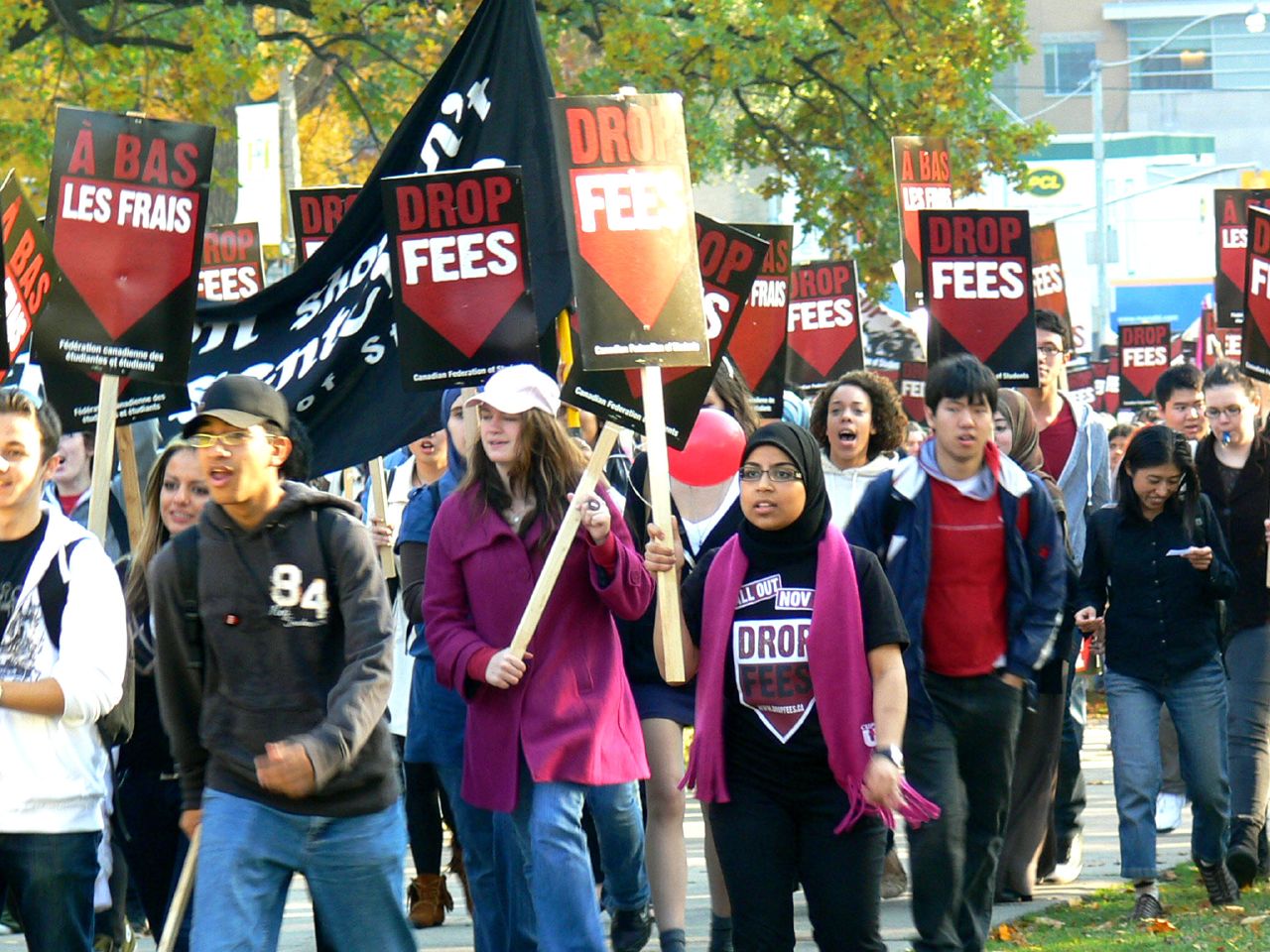Like this article? rabble is reader-supported journalism. Chip in to keep stories like these coming.
The recently released PBO report, Federal Spending on Postsecondary Education, is a treasure trove of information about education funding, tuition fees, savings schemes and tax credits going back to 2004-2005 and projecting forward to 2020.
It’s also vindication for a number of organizations that have been pointing out how the high costs of higher education are a barrier for low-income students; that RESPs disproportionately benefit the wealthy; that the majority of public funds allocated through these savings schemes are not going to families who are most in need; that debt loads are increasing; and that tax credits are no solution.
It follows hot on the heels of an internal evaluation of the Canada Education Savings Program that also underscored how the public grant portion of education savings accounts were heavily skewed towards the wealthy. Incidentally, the same trends were noted in 2002 and 2008 by UBC economist Kevin Milligan, and have been thoroughly discussed by organizations such as the Canadian Federation of Students, and here at the Canadian Centre for Policy Alternatives. More recently, the 2016 Alternative Federal Budget provides a plan to eliminate tuition fees based on an increase in federal funding and refocusing the existing and often ineffective and inefficient funding mechanisms.
But let’s take a closer look at the PBO report by the numbers (and a shout-out to Trish Hennessy for the index format).
$12.3 billion
- The total federal contributions to post-secondary education in 2013-14 (down from a high of $12.8 billion in 2010-11). [See page 2 of the PBO report.]
$917 million
- The total federal contributions to Indigenous postsecondary education, student employment programs and merit based grants in 2013-14 (down from $1 billion in 2010-11). [p. 23]
$3.3 billion
- The total federal funding for postsecondary research in 2013-14 (down from a high of $3.8 billion in 2010-11 as part of stimulus spending). [p. 24]
21.4 per cent
- The participation rate of Canadians aged 15-29 in postsecondary programs in 2013-14 (up from 18.9 per cent in 2004-05). [p. 7]
2 per cent
- The average annual postsecondary enrolment growth rate from 2004-05 to 2013-14. [p. 7]
60 per cent
- The percentage of post-secondary students from higher-income families (from the two highest after-tax or disposable income quintiles). [p. 4]
1.7 per cent
- The average by which tuition fees increased each year above the rate of inflation from 2004-05 to 2013-14. [p. 7]
498,000
- The number of students participating in the Canadian Student Loan Program in 2013-14 (up from 340,000 in 2004-05). [p. 21]
$2.7 billion
- The total amount in loans issued in 2013-14 (up from $1.6 billion in 2004-05). [p. 21]
39 per cent
- The student loan uptake rate in 2013-14 (up from 34.3% in 2010-11). [p. 22]
35.7 per cent
- The percentage of students whose needs were at or in excess of amounts they could borrow in 2013-14 (up from 29 per cent in 2010-11). [p. 22]
48.9 per cent
- The (estimated) percentage of students whose needs will be at or exceed the loan limit by 2020-21. [p. 22]
34 per cent
- The percentage by which families in highest net worth quintile were more likely to have an RESP than those in lowest net worth quintile in 2012. [p. 19]
$26,380
- The average amount more that the richest families have in their RESP compared to the poorest. [p. 19]
37.7 per cent
- The percentage of the total amount of tax credits received by the top 20 per cent of families (ranked by after-tax income in 2015). [p. 16]
17.2 per cent
- The percentage received by lowest 20 per cent of families (based on after-tax family income over the same period). [p. 16]
6
- The estimated number of months between when tuition fees are due (late summer) and when a tax filer can reasonably expect to receive a tax refund (spring of the following year) for tuition tax credits. [p. 33]
$1.4 billion
- The total estimated value of the tuition tax credit in 2020, 39 per cent of which will be allocated to the top 20 per cent of families. [p. 33]
28 per cent
- The percentage increase in the average amount of student debt held by unattached individuals (from 1999 to 2012). [p. 49]
$22,276
- Average debt at graduation in 2013. [p. 7]
Erika Shaker is Director of Education and Outreach at the CCPA. Follow Erika on Twitter @ErikaShaker.
Like this article? rabble is reader-supported journalism. Chip in to keep stories like these coming.
Image: Flickr/Tania Liu



